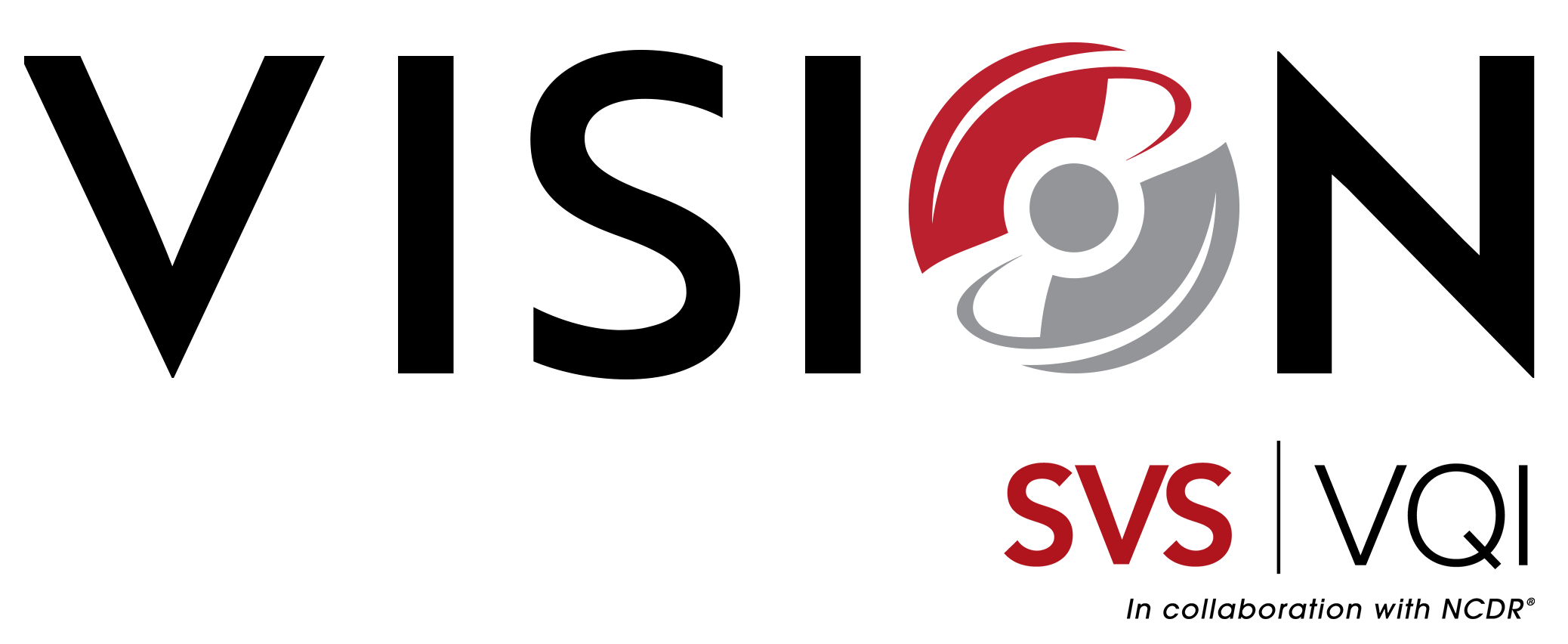svs vqi vision

The SVS VQI Vascular Implant Surveillance and Interventional Outcomes Network (VISION) is a partnership between the SVS VQI and MDEpiNet that directly supports the mission of the SVS VQI to improve the quality, safety, effectiveness and cost of vascular healthcare by collecting and exchanging information. VISION links SVS VQI registry data to Medicare claims to generate novel registry-claims linked datasets. The datasets combine the clinical detail from the SVS VQI with long-term outcome variables derived from Medicare claims. VISION data is used to generate center-specific feedback reports called, Survival, Reintervention and Surveillance (SRS) and to analyze device performance and long-term outcomes of vascular surgical techniques. Use of the data is governed by a Data Use Agreement (DUA) between Weill Cornell Medical College and the Center for Medicaid and Medicare Services (CMS).
Medicare-match datasets are available for some datasets on a limited basis – please read the overview and dataset details here before you request these datasets to ensure that the data will benefit your study. The Medicare-match data are provided under a separate Data Use Agreement through Weill Cornell and there is a 3 – 6 month further lead time, once the project is approved.
Dataset Description
Medicare-Match data are available for EVAR, OAAA, PVI, TEVAR, CAS, INFRA and SUPRA datasets. For each dataset, the following SVS VQI-Medicare derived outcomes are available:
- Death
- Procedure-specific adverse outcome (stroke, aortic rupture, amputation)
- Reintervention (repeated vascular procedures)
- Readmission
- Post-procedure imaging
- Cost
For more details on how VISION datasets are generated, and how to use VISION data, please refer to the following supplemental materials:
- Late Outcomes Descriptive Memo
- Survival Reintervention and Surveillance (SRS) Report FAQs
- Process for Requesting Analyses
- VQI linkage and Index Count
Coding Algorithms
The VISION team uses a list of CPT, ICD9 and ICD10 codes to link index procedures in the VQI and identify late outcomes in Medicare. For more information on these algorithms and the methodology, please contact the VISION team using the contact information provided below:

Long-term EVAR Assessment and Follow-Up (LEAF) Surveillance Protocol
Coming soon.
Peer-reviewed publications (selected)
- Hoel, et al. Pilot Study For Long Term Outcome Assessment (2017) Hoel Pilot Study
- Columbo, et al. Validating Publicly Available Crosswalks for ICD9-ICD10 Translation (2018) ICD-9 to ICD-10
- Columbo, et al. A Comparison of Reintervention Rates (2019) Columbo Adjudication
- Wanken, et al. Characterization of Endovascular Abdominal Aortic Aneurysm Repair Surveillance (2020) Wanken et al
- Columbo, et al. Long-term Reintervention After Endovascular Abdominal Aortic Aneurysm Repair (2021)
- Columbo, et al. Five-year reintervention after endovascular abdominal aortic aneurysm repair in the Vascular Quality Initiative (2020)
- Trooboff, et al. Characterizing Reimbursements for Medicare Patients Receiving Endovascular Abdominal Aortic Aneurysm Repair at Vascular Quality Initiative Centers (2020)
- Ramkumar, et al. Adverse Events after Atherectomy: Analyzing Long-Term Outcomes of Endovascular Lower Extremity Revascularization Techniques (2019)
- Ramkumar, et al. Open versus Endovascular Repair of Abdominal Aortic Aneurysm. N Engl J Med. 2019 Sep 12;381(11):e24. doi: 10.1056/NEJMc1908829. https://www.nejm.org/doi/full/10.1056/NEJMc1908829?query=recirc_curatedRelated_article
- Columbo, et al. Claims-based surveillance for reintervention after endovascular aneurysm repair among non-Medicare patients (2019)
- de Guerre, et al, Late outcomes after endovascular and open repair of large abdominal aortic aneurysms (2021)
- Wanken ZJ, et al. Translating coding lists in administrative claims-based research for cardiovascular procedures (2020)
- Wallaert JB, et al. Relationships between 2-Year Survival, Costs, and Outcomes following Carotid Endarterectomy in Asymptomatic Patients in the Vascular Quality Initiative (2016)
- Mao J, et al. Validation of an indirect linkage algorithm to combine registry data with Medicare claims. (2022). https://doi.org/10.1016/j.jvs.2022.01.132
Other Articles
- Patients with large AAAs see higher five-year mortality with EVAR compared to open repair. Vascular Specialist. 10th July 2020
- A Vascular VISION: Improved patient care. Vascular Specialist. 2nd September 2020
For more information or to request a current copy of the variable dictionary, please contact the VISION Team.
Kayla Moore: VISION Research Project Director, Kayla.O.Moore@dartmouth.edu
Philip Goodney: VISION Principal Investigator, Philip.P.Goodney@hitchcock.org
